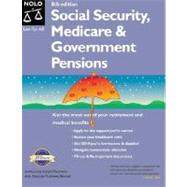| Introduction | |||||
|
|||||
|
2 | (2) | |||
|
4 | (1) | |||
|
5 | (5) | |||
|
10 | (2) | |||
|
12 | (1) | |||
|
13 | (2) | |||
|
15 | (5) | |||
|
20 | ||||
|
|||||
|
2 | (2) | |||
|
4 | (3) | |||
|
7 | (3) | |||
|
10 | ||||
|
|||||
|
2 | (3) | |||
|
5 | (5) | |||
|
10 | (2) | |||
|
12 | (3) | |||
|
15 | (1) | |||
|
16 | ||||
|
|||||
|
2 | (2) | |||
|
4 | (1) | |||
|
5 | (1) | |||
|
6 | (1) | |||
|
6 | ||||
|
|||||
|
2 | (1) | |||
|
3 | (2) | |||
|
5 | (2) | |||
|
7 | (1) | |||
|
8 | (1) | |||
|
9 | ||||
|
|||||
|
2 | (5) | |||
|
7 | (2) | |||
|
9 | ||||
|
|||||
|
2 | (6) | |||
|
8 | (4) | |||
|
12 | (2) | |||
|
14 | ||||
|
|||||
|
2 | (6) | |||
|
8 | (5) | |||
|
13 | (3) | |||
|
16 | (1) | |||
|
16 | ||||
|
|||||
|
3 | (1) | |||
|
3 | (11) | |||
|
14 | (2) | |||
|
16 | (2) | |||
|
18 | ||||
|
|||||
|
2 | (1) | |||
|
3 | (3) | |||
|
6 | (1) | |||
|
6 | (1) | |||
|
7 | (2) | |||
|
9 | ||||
|
|||||
|
2 | (1) | |||
|
3 | (4) | |||
|
7 | (8) | |||
|
15 | (5) | |||
|
20 | (8) | |||
|
28 | ||||
|
|||||
|
2 | (3) | |||
|
5 | (1) | |||
|
6 | (4) | |||
|
10 | (1) | |||
|
11 | (6) | |||
|
17 | (14) | |||
|
31 | (1) | |||
|
32 | ||||
|
|||||
|
3 | (1) | |||
|
4 | (8) | |||
|
12 | (5) | |||
|
17 | ||||
|
|||||
|
2 | (3) | |||
|
5 | (7) | |||
|
12 | (3) | |||
|
15 | ||||
|
|||||
|
2 | (1) | |||
|
3 | (3) | |||
|
6 | (1) | |||
|
7 | (2) | |||
|
9 | (1) | |||
|
10 | (1) | |||
|
11 | (2) | |||
|
13 | (1) | |||
| Index |








